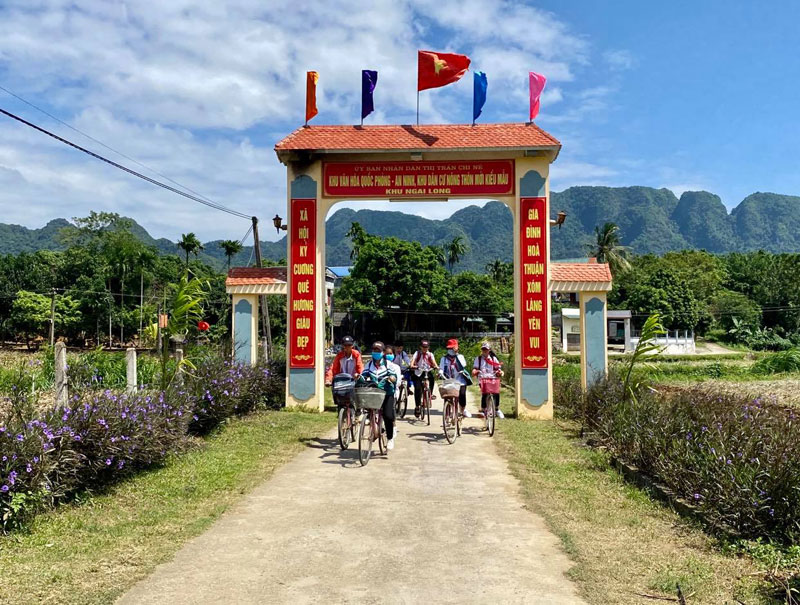
(HBO) – We were impressed with flowers along roads running through Ngai Long village in Chi Ne town, Lac Thuy district, Hoa Binh province.
 Flowers are grown along the road to Ngai
Long – a model new-style rural area in Chi Ne town, Lac Thuy district.
Flowers are grown along the road to Ngai
Long – a model new-style rural area in Chi Ne town, Lac Thuy district.
In
response to the new-style rural area building movement, local residents
contributed money and working days worth 500 million VND to building the
village’s gate, upgrading its cultural house, and growing flowers.
Their
efforts paid off as all of the roads in Ngai Long have been concretised and the
cultural house fully equipped to serve community activities.
Having
85 percent of the total households working in agriculture, the village has
stepped up the shift of plant and animal structures, and taken the lead in
replicating new models.
It
now counts five model orchards, including one covering 3,000 sq.m of Secretary
of the village’s Party unit Le Van Hoa who earns more than 120 million VND from
the trees.
Ngai
Long expects to raise its per capita income to 48 million VND this year, a rise
from 6 million VND in 2019. Thanks to efforts in the new-style rural area
building movement, the material and spiritual lives of locals have improved
significantly and the poverty reduction programme reaped significant outcomes.
The
village, therefore, has been regarded as an area worth living in Lac Thuy
district, with political security and social order and safety ensured./.
The People’s Committee of Lac Son district held a ceremony on April 28 to receive the provincial relic certificate for the ancient rock carving site at Suoi Co stream, located in My Thanh commune.
A special music show titled "The country is in the fullness of joy” has been held at Hoa Binh Square in Hoa Binh city in celebration of the 50th anniversary of the liberation of the South and national reunification (April 30, 1975–2025).
The People's Committee of Lo Son commune, Tan Lac district, has organised the local annual traditional stream fishing festival on April 19 - 20.
As a land deeply intertwined with human history and Vietnam’s millennia-long journey of nation-building and defence, Hoa Binh is often revered for its epic tales and legends.
Residents of Hoa Binh boast a rich cultural identity, reflected in their unique language, traditional attire, customs, and folk melodies – described as "sweet as honey, clear as a mountain stream.”
Lac Son district’s Vu ban town held the 2025 Truong Kha temple festival on April 12–13 (the 15th–16th days of the third lunar month). Since its revival in 2019, the festival has been organised every three years, preserving valuable intangible heritage while meeting the community’s cultural and spiritual needs.



 Flowers are grown along the road to Ngai
Long – a model new-style rural area in Chi Ne town, Lac Thuy district.
Flowers are grown along the road to Ngai
Long – a model new-style rural area in Chi Ne town, Lac Thuy district.